Teaching approaches: Questioning
- Active learning
- Applying and consolidating
- Argumentation
- Assessment
- Classroom management
- Collaboration
- Curriculum development
- Curriculum planning
- Dialogue
- Differentiation
- Discussion
- Drama
- Exploring and noticing structure
- Games
- Group talk
- Group work
- Higher order
- Homework
- Inclusion
- Inquiry
- Introduction
- Investigation
- Language
- Learning objectives
- Mathematical thinking
- Modelling
- Narrative
- Open ended
- Planning
- Planning for interactive pedagogy
- Planning for professional development
- Posing questions and making conjectures
- Questioning
- Reasoning
- Reasoning, justifying, convincing and proof
- Scientific method
- Sharing practice
- The ORBIT Resources
- Thinking strategically
- Visualisation
- Visualising and explaining
- Whole class
- Working systematically
Introduction
The interaction between teacher and learners is the most important feature of the classroom. Whether helping learners to acquire basic skills or a better understanding to solve problems, or to engage in higher-order thinking such as evaluation, questions are crucial. Of course, questions may be asked by pupils as well as teachers: they are essential tools for both teaching and learning.
For teachers, questioning is a key skill that anyone can learn to use well. Similarly, ways of helping pupils develop their own ability to raise and formulate questions can also be learned. Raising questions and knowing the right question to ask is an important learning skill that pupils need to be taught.
Research into questioning has given some clear pointers as to what works. These can provide the basis of improving classroom practice. A very common problem identified by the research is that pupils are frequently not provided with enough ‘wait time’ to consider an answer; another is that teachers tend to ask too many of the same type of questions. (Adapted from Types Of Question, section Intro).
Why Question?
The purposes of questioning
Teachers ask questions for a number of reasons, the most common of which are
- to interest, engage and challenge pupils;
- to check on prior knowledge and understanding;
- to stimulate recall, mobilising existing knowledge and experience in order to create new understanding and meaning;
- to focus pupils’ thinking on key concepts and issues;
- to help pupils to extend their thinking from the concrete and factual to the analytical and evaluative;
- to lead pupils through a planned sequence which progressively establishes key understandings;
- to promote reasoning, problem solving, evaluation and the formulation of hypotheses;
- to promote pupils’ thinking about the way they have learned.
The kind of question asked will depend on the reason for asking it. Questions are often referred to as ‘open’ or ‘closed’.
Closed questions, which have one clear answer, are useful to check understanding during explanations and in recap sessions. If you want to check recall, then you are likely to ask a fairly closed question, for example ‘What is the grid reference for Great Malvern?’ or ‘What do we call this type of text?’
On the other hand, if you want to help pupils develop higher-order thinking skills, you will need to ask more open questions that allow pupils to give a variety of acceptable responses. During class discussions and debriefings, it is useful to ask open questions, for example ‘Which of these four sources were most useful in helping with this enquiry?’, ‘Given all the conflicting arguments, where would you build the new superstore?’, ‘What do you think might affect the size of the current in this circuit?’
Questioning is sometimes used to bring a pupil’s attention back to the task in hand, for example ‘What do you think about that, Peter?’ or ‘Do you agree?’ (Adapted from Types Of Question, section Why).
A Common Classroom Sequence
A striking insight provided by classroom research is that much talk between teachers and their pupils has the following pattern: a teacher's question, a pupil's response, and then an evaluative comment by the teacher. This is described as an Initiation-Response-Feedback exchange, or IRF. Here's an example
- I Teacher - What's the capital city of Argentina?
- R Pupil - Buenos Aires
- F Teacher - Yes, well done
This pattern was first pointed out in the 1970s by the British researchers Sinclair and Coulthard. Their original research was reported in
- Sinclair, J. and Coulthard, M. (1975) Towards an Analysis of Discourse: the English used by Teachers and Pupils. London: Oxford University Press.
Sinclair and Coulthard's research has been the basis for extended debates about whether or not teachers should ask so many questions to which they already know the answer; and further debate about the range of uses and purposes of IRF in working classrooms. Despite all this, it seems that many teachers (even those who have qualified in recent decades) have not heard of it. Is this because their training did not include any examination of the structures of classroom talk – or because even if it did, the practical value of such an examination was not made clear?
A teacher's professional development (and, indeed, the development of members of any profession) should involve the gaining of critical insights into professional practice – to learn to see behind the ordinary, the taken for granted, and to question the effectiveness of what is normally done. Recognizing the inherent structure of teacher-pupil talk is a valuable step in that direction. Student teachers need to see how they almost inevitably converge on other teachers' style and generate the conventional patterns of classroom talk. By noting this, they can begin to consider what effects this has on pupil participation in class. There is nothing wrong with the use of IRFs by teachers, but question-and-answer routines can be used both productively and unproductively. By understanding and questioning what generally happens, students can begin to construct the kind of dialogues that they can feel confident have most educational value. (Adapted from The Importance of Speaking and Listening, section IRF).
Summary of research
Effective questioning Research evidence suggests that effective teachers use a greater number of open questions than less effective teachers. The mix of open and closed questions will, of course, depend on what is being taught and the objectives of the lesson. However, teachers who ask no open questions in a lesson may be providing insufficient cognitive challenges for pupils.
Questioning is one of the most extensively researched areas of teaching and learning. This is because of its central importance in the teaching and learning process. The research falls into three broad categories
- What is effective questioning?
- How do questions engage pupils and promote responses?
- How do questions develop pupils’ cognitive abilities?
What is effective questioning?
Questioning is effective when it allows pupils to engage with the learning process by actively composing responses. Research (Borich 1996; Muijs and Reynolds 2001; Morgan and Saxton 1994; Wragg and Brown 2001) suggests that lessons where questioning is effective are likely to have the following characteristics
- Questions are planned and closely linked to the objectives of the lesson.
- The learning of basic skills is enhanced by frequent questions following the exposition of new content that has been broken down into small steps. Each step should be followed by guided practice that provides opportunities for pupils to consolidate what they have learned and that allows teachers to check understanding.
- Closed questions are used to check factual understanding and recall.
- Open questions predominate.
- Sequences of questions are planned so that the cognitive level increases as the questions go on. This ensures that pupils are led to answer questions which demand increasingly higher-order thinking skills but are supported on the way by questions which require less sophisticated thinking skills.
- Pupils have opportunities to ask their own questions and seek their own answers. They are encouraged to provide feedback to each other.
- The classroom climate is one where pupils feel secure enough to take risks, be tentative and make mistakes.
The research emphasises the importance of using open, higher-level questions to develop pupils’ higher-order thinking skills. Clearly there needs to be a balance between open and closed questions, depending on the topic and objectives for the lesson. A closed question, such as ‘What is the next number in the sequence?’, can be extended by a follow-up question, such as ‘How did you work that out?’
Overall, the research shows that effective teachers use a greater number of higher- order questions and open questions than less effective teachers. However, the research also demonstrates that most of the questions asked by both effective and less effective teachers are lower order and closed. It is estimated that 70–80 per cent of all learning-focused questions require a simple factual response, whereas only 20–30 per cent lead pupils to explain, clarify, expand, generalise or infer. In other words, only a minority of questions demand that pupils use higher-order thinking skills.
How do questions engage pupils and promote responses?
It doesn’t matter how good and well structured your questions are if your pupils do not respond. This can be a problem with shy pupils or older pupils who are not used to highly interactive teaching. It can also be a problem with pupils who are not very interested in school or engaged with learning. The research identifies a number of strategies which are helpful in encouraging pupil response. (See Borich 1996; Muijs and Reynolds 2001; Morgan and Saxton 1994; Wragg and Brown 2001; Rowe 1986; Black and Harrison 2001; Black et al. 2002.)
Pupil response is enhanced where
- there is a classroom climate in which pupils feel safe and know they will not be criticised or ridiculed if they give a wrong answer;
- prompts are provided to give pupils confidence to try an answer;
- there is a ‘no-hands’ approach to answering, where you choose the respondent rather than have them volunteer;
- ‘wait time’ is provided before an answer is required. The research suggests that 3 seconds is about right for most questions, with the proviso that more complex questions may need a longer wait time. Research shows that the average wait time in classrooms is about 1 second (Rowe 1986; Borich 1996).
How do questions develop pupils’ cognitive abilities?
Lower-level questions usually demand factual, descriptive answers that are relatively easy to give. Higher-level questions require more sophisticated thinking from pupils; they are more complex and more difficult to answer. Higher-level questions are central to pupils’ cognitive development, and research evidence suggests that pupils’ levels of achievement can be increased by regular access to higher-order thinking. (See Borich 1996; Muijs and Reynolds 2001; Morgan and Saxton 1994; Wragg and Brown 2001; Black and Harrison 2001.)
When you are planning higher-level questions, you will find it useful to use Bloom’s taxonomy of educational objectives (Bloom and Krathwohl 1956) to help structure questions which will require higher-level thinking. Bloom’s taxonomy is a classification of levels of intellectual behaviour important in learning. The taxonomy classifies cognitive learning into six levels of complexity and abstraction
- Knowledge – pupils should: describe; identify; recall.
- Comprehension – pupils should: translate; review; report; restate.
- Application – pupils should: interpret; predict; show how; solve; try in a new context.
- Analysis – pupils should: explain; infer; analyse; question; test; criticise.
- Synthesis – pupils should: design; create; arrange; organise; construct.
- Evaluation – pupils should: assess; compare and contrast; appraise; argue; select.
On this scale, knowledge is the lowest-order thinking skill and evaluation is the highest. It is worth pointing out that, in most cases, pupils will need to be able to analyse, synthesise and evaluate if they are to attain level 5 and above in the National Curriculum and Grade C and above at GCSE.
Bloom researched thousands of questions routinely asked by teachers and categorised them. His research, and that of others, suggests that most learning- focused questions asked in classrooms fall into the first two categories, with few questions falling into the other categories which relate to higher-order thinking skills. (Adapted from Questioning Research Summary, section Body).
Practical Advice
The practice of questioning
Questioning is an area characterised by a good deal of instinctive practice. The first task will help you reflect on your use of questioning.
Task 1 Questioning: a self-review 20 minutes
For one lesson you teach, write down, as far as possible, all questions that you ask. To help capture them, you could make an audio recording of yourself or ask another teacher to observe you. (You could do the same for this colleague in return.)
Now analyse the questions you have asked, using a grid like the one below. Refer to the list of the purposes of questioning above to help you with the fourth column.
| Question posed | Open | Closed | Evaluation of pupils’ responses(impact on learning) |
|---|---|---|---|
| What do we call the process green plants use to make food? | _______ | Helped all pupils remember a key word | |
| Explain the differences between the processes of photosynthesis and respiration | _______ | Helped all pupils to process knowledge |
(Adapted from Types Of Question, section How).
Relevant resources
| Area | Circles, frustums and cylinders revision | |

|
Measure the volumes of objects This resource offer students the opportunity to engage in active learning(ta) - measuring and calculating using large size cylinders and frustums. This lesson brings great opportunity for small group "dialogic teaching(ta)". Open-ended and closed questioning(ta) of students can be used to draw on their existing knowledge and extend their understanding. The teacher provides a practical commentary below.
| |
| Assessment | Changing KS3 Questions for Engaging Assessment | |
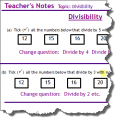
|
A large set of questions grouped by topic, paper, and national curriculum level Test questions are often seen as uninteresting and useful only to assess pupils summatively. This resource however allows questioning(ta) to be used to support pupils’ revision, creativity and higher order(ta) problem-solving in class. The tasks could be conducted via whole class(ta) discussion(ta) or assessment(ta), perhaps using mini-whiteboards(tool), or in small group work(ta) situations.
| |
| Assessment | Using Assessment to Raise Achievement in Maths | |

|
Learning goals; self & peer assessment; effecting questioning; marking and case studies This resource explores approaches to assessment(ta) in maths, including the sharing of learning objectives(ta), group work(ta), whole class(ta) assessment, questioning(ta) and more. Four case studies serve as useful discussion prompts to share practice(ta). This .doc version of the QCA's 'Using assessment(ta) to Raise Achievement in Maths' allows schools to select parts of the document that are most relevant to them.
| |
| Assessment | Diagnostic Questions in Maths Teaching | |

|
Using questions to probe what pupils do, and do not, understand These questions provide a useful starting point from which to think about the use of diagnostic questions(ta) for assessment(ta) for learning and whole class(ta) dialogic teaching(ta). They may be useful for teachers in their own right as sample questions, or to think about the best way to deliver feedback, use ICT tools effectively, and support learners through assessment. In this context the questions should be considered with a critical eye. Teachers might like to think about:
Teachers might take this as an opportunity to engage in sharing practice(ta) to think about how to use such questions in the classroom - perhaps using mini-whiteboards(tool) or ICT tools - and outside of them, perhaps using quiz(tool) or voting(tool) software. | |
| Astronomy | Stars in the sky: what's up? | |

|
Use a software planetarium and encourage students to think about astronomy This activity offers an opportunity for whole class(ta) discussion(ta) and questioning(ta) centred around the use of the Stellarium. It also affords good opportunities for self-directed study or homework(ta) extensions, including perhaps the use of free mobile apps(tool) (see below). There are also opportunities for some cross curricula(i) discussion of geography (navigation by stars) and history or literacy in relation to the ancient world.
| |
| Astronomy | Recreating the Big Bang | |

|
An introduction to the creation of the Universe. This presentation offers a tour of the European Organization for Nuclear Research (CERN) and explains why it is worth spending money on one experiment. It then delves into particle physics, looking at sub-atomic particles to offer analogies for what these particles are. The session focuses on whole class(ta) dialogue(ta) and higher order(ta) thinking skills as well as exploring scientific language(ta). This 4th session and the 5th are together the most theoretically complex and they present challenges to young peoples world views. As such they are led as much by their questions(ta) as by the presentation.
| |
| Astronomy | It's full of stars | |

|
Using a telescope and considering how those early astronomers may have worked Astronomy(topic) has been practiced for centuries and doesn't require expensive equipment! This first session aims to train the whole class(ta) to use a telescope and, hopefully, to provide an opportunity to engage in some active learning(ta). The lesson includes some naked-eye observations and describes how modern technology helps scientists know where to look. You can explore the scientific method(ta) and language(ta) at this point, using targeted questioning(ta)/differentiation(ta). Students may be able to engage in an inquiry(ta)-based project around this work, perhaps for homework(ta).
| |
| Blogs | Creating and Using OER to Promote Best Practice | |

|
One school's approach to sharing and promoting best practice using a blog This lesson idea encourages collaboration(ta) between teachers in order to develop and share practice(i) across a school. Blogs provide excellent opportunities for children and adults to share ideas and work together. They encourage and enable dialogue(ta) between a writer - or group of writers - and an audience, allowing for quick and easy feedback. They enable questions(ta) to be asked and answered quickly. This example shows a blog being used to encourage discussion(ta) to enable curriculum planning(topic) and curriculum development(topic).
| |
| CPD | Encouraging Pupils to Ask Effective Questions | |

|
Getting pupils to do the questioning This resource describes some methods to encourage pupils themselves to engage in effective questioning(ta) - an active learning(ta) approach which may be useful in whole class(ta) or group work(ta) discussion(ta).
| |
| CPD | Common Pitfalls in Questioning | |

|
Exploring problematic questions and ways to avoid them Questioning(ta) is a key classroom practice, and skill, and can sometimes fall into the trap of focusing on lower levels, as opposed to higher order(ta) reasoning(ta) and discussion(ta) skills. This resource covers some reasons why this - and other pitfalls - occur, with some practical advice for ensuring high quality questioning in your classroom.
| |
| CPD | Questioning Techniques | |

|
How do I question? Thinking about questioning techniques in the classroom This resource explores some alternative strategies to direct questioning(ta) including some advice and activities for supporting teachers in classroom practice.
| |
| CPD | Questioning - Bloom's Taxonomy | |

|
Developing questioning through Bloom's taxonomy This resource discusses questioning(ta) and Bloom's taxonomy - which, at the higher levels, can be linked to higher order(ta) thinking skills and reasoning(ta).
| |
| CPD | Developing Good Explanations | |

|
Say that again? Developing good explanations for classroom teaching This resource explores some characteristics of good explanations (including linking to questioning(ta)), explaining these thoroughly and linking them to pupils' ability to engage in active learning(ta)
| |
| CPD | Giving Oral Feedback | |

|
Developing good practice in giving oral feedback This resource discusses giving oral feedback, particularly in the context of assessment(ta), which could include whole class(ta) discussion(ta) or group talk(ta), as well as questioning(ta) contexts.
| |
| Consecutive Sums | Using Prime and Square Numbers - How Old Am I? | |
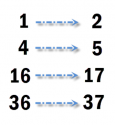
|
Last year I was square, but this year I am in my prime. How old am I? This short activity offers opportunity for pupils to engage in mathematical thinking(ta) and higher order(ta) problem solving/reasoning(ta). They should be able to make links between different areas of mathematics and explore their ideas in whole class(ta) discussion(ta) and questioning(ta).
| |
| Ethics | Ethical issues in human reproduction | |
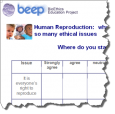
|
Why does reproduction raises so many ethical issues? When does life begin? This lesson outline stimulates A-level students to engage in discussion(ta), develop their reasoning(ta) skills and increase their awareness of the bioethical(topic) issues involved in human reproduction.
Background texts and open-ended questioning(ta) about human reproduction, contraception and IVF are provided as the stimulus. Small group discussion about these topics, writing on post-it notes, and reading case studies aim to get students reasoning(ta) to justify their opinions, and to compare and evaluate competing views. Finally, whole class(ta) discussion synthesises the emerging ideas and encourages students to consider changing their positions or adding additional issues to a recording table. | |
| Ethics | Cloning | |

|
Cloning - Potential and Issues The topic of the ethics(topic) of modern biology needs to draw on a wider range of sources than a printed book may provide. This resource uses a web tutorial interspersed with external links to news and comment. Rather than leave the students to explore too many interests, a worksheet with questions enables the teacher to focus the students on a subset of the material. You can adapt this to your particular need, for example, if you wanted students to have a discussion(ta)in small groups. You might also consider using a blog, chat room or other ICT tools to record the questioning(ta) and reasoning(ta) around this topic. The lesson-planning proforma (or draft lesson plan) includes a list of objectives that shows the scope of the material.
| |
| Ethics | Designer Babies | |
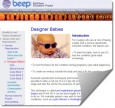
|
When does life actually begin? By using an informative web tutorial, this resource aims to stimulate discussion(ta) on the ethics(topic) of modern biology. A worksheet asks students where they stand and reassures them that their response might be kept private. You might also consider using a blog, chat room or other ICT tool to record the questioning(ta) and reasoning(ta) around this topic. A teaching section offers guidance on 'teaching argument' using 'Toulmin’s model of argument' and 'The IDEAS project'.
| |
| Force | What floats and what sinks | |

|
Is getting in the bath a way to lose weight? This activity supports a number of learning types:
| |
| Force | Force | |

|
Thinking about 'force' in the national curriculum This sessions engaged pupils in inquiry(ta) using the scientific method(ta) to explore force. It offers opportunity for teachers to use higher order questioning(ta), whole class assessment(ta) and to engage pupils in effective group work(ta) for investigation.
| |
| Force | What makes a good paper airplane? | |

|
| |
| Force | Which material makes a good parachute? | |

|
A simple investigation into parachutes and air resistance This activity supports a number of learning types:
| |
| Force | Building bridges from a piece of A4 paper | |

|
A bridge too far... This activity supports a number of learning types:
| |
| Force | Moving and falling objects | |

|
Understanding moving and falling objects as well as progression through the years This published article explores the sorts of objectives(ta) they should be meeting, and the questioning(ta) teachers may engage in. The activities, aimed at progressively older children, engage them in inquiry(ta) based learning. The article explores how increasingly complex topics may be taught, and how teachers can ensure that children have a good grasp of a topic. There are suggestions for further reading to extend the primary teacher's knowledge of the area. Some of the suggestions appear in a related resource Progression & questioning techniques in primary science projects
| |
| Genetics | How DNA is sequenced: the stages | |

|
The complexity and scale of genome sequencing Students match diagrams of the stages of DNA sequencing with a list of text descriptions of the process. The lesson can involve students discussing in pairs / group work(ta), followed by a teacher or student-led plenary. Students would share ideas, come to a consensus and check the ‘whole class(ta) response’ with their version. The teacher's questioning(ta) can focus on scientific method(ta) and use of scientific language(ta). The lesson idea provides opportunities for the effective use of assessment(ta).
| |
| Graph | Variation of human characteristics - Visualising Class data | |

|
A big survey of ourselves, measuring hands, feet and more The lesson offers the opportunity to explore measurement, relationships between measurement, and ways to visualise and summarise this data. The use of ICT(i) allows the teacher to enter data and for pupils to immediately see the impact this has on the pie chart and frequency tables (which are automatically updated). This also allows the teacher to change the 'range' for the frequency counts, and discuss with pupils the impact of this on the pie chart, and whether this is a good representation - encouraging the use of mathematical language(ta) and scientific method(ta) throughout. In collecting the data pupils have opportunity for some self-directed group work(ta) - to measure various lengths as described below - and the teacher could use whole class(ta) questions(ta) to explore the strategies taken to conduct this investigation(ta).
| |
| ICT | Data Logging and Control | |

|
A compendium with numerous ideas for using sensors to teach science. This book provides a set of resources and lesson ideas with ICT(i) as a key focus for use in inquiry(ta) based learning and the scientific method(ta). It offers opportunities for use of group work(ta) and collaboration(ta) as well as whole class(ta) questioning(ta).
| |
| ICT | Primary Science Curriculum Activities with Sensors | |

|
A compendium of investigations with sensors in primary science This resource provides a set of activities to engage pupils in inquiry(ta) based learning in the scientific method(ta), often making effective use of ICT(i) and sensors(tool). The activities involve whole class(ta) questioning(ta) and collaborative(ta) group work(ta).
| |
| ICT | IT in Primary Science | |

|
A whole book of ideas for using generic ICT tools in science This book is a compendium of lesson ideas with ICT(i) as a key focus for use in inquiry(ta) based learning and the scientific method(ta). It offers opportunities for use of group work(ta) and collaboration(ta) as well as whole class(ta) questioning(ta).
| |
| ICT | Infant and Primary Science Activities with Sensors | |

|
A compendium of investigations with sensors in primary science. This is a compendium of activities to engage pupils in inquiry(ta) based learning in the scientific method(ta), often making effective use of ICT(i) and sensors(tool). The activities involve whole class(ta) questioning(ta) and collaborative(ta) group work(ta).
| |
| ICT | IT in Secondary Science | |

|
A whole book of ideas for using generic ICT tools in science This book provides resources and lesson ideas with ICT(i) as a key focus for use in inquiry(ta) based learning and the scientific method(ta). It offers opportunities for use of group work(ta) and collaboration(ta) as well as whole class(ta) questioning(ta).
| |
| Living things | Classifying and organising living things using images | |
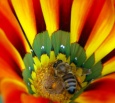
|
Find different ways to classify living things This lesson offers opportunities to explore ways to classify living things as well as characteristics which might be relevant, and how to address difficulties that may arise when trying to classify things in this way. The activity may be enhanced by the use of ICT(i) software (e.g. Picasa) but could be carried out with paper-based resources.
This lesson presents a good opportunity for small group work(ta) and some inquiry(ta) into how we classify; and why some classification methods might be more useful, or more scientifically interesting than others. There is also a good opportunity to use different sorts of questioning(ta); to encourage pupils to question each other; to engage in peer assessment(ta) and to focus discussion(ta) on the scientific method(ta) using key vocabulary(ta). | |
| Measuring | Measuring Light - Light and Dark | |

|
Light can be light, dark or somewhere in between This lesson involves the use of higher order questioning(ta) on scientific method(ta) topics to engage pupils in an inquiry(ta) relating to the nature of light, its measurement, and the use of sensors.
| |
| Measuring | Measuring Temperature - Cold and Hot | |

|
Put a number on the meaning of hot and cold This lesson involves the use of higher order questioning(ta) to engage pupils in an inquiry(ta) relating on how to record temperature and the use of sensors.
| |
| Measuring | Measuring Light - Does light shine through everything? | |

|
Using a sensor to see what's transparent and translucent This lesson involves the use of higher order questioning(ta) on scientific method(ta) topics to engage pupils in an inquiry(ta) relating to the nature of light, its measurement, and the use of sensors.
| |
| Measuring | Monitoring Temperature - Day and Night | |

|
What happens to the room's temperature when I'm not here? This lesson involves the use of higher order questioning(ta) on scientific method(ta) topics to engage pupils in an inquiry(ta) relating to recording temperature and the use of sensors.
| |
| Polygons | Exploring properties of rectangles: Perimeter and area. | |

|
Do two rectangles that have the same area also have the same perimeter? A problem to inspire higher order(ta) questioning(ta) especially in whole class(ta) dialogic teaching(ta) encouraging pupils to engage in mathematical thinking(ta) and language(ta). You could use Geogebra(tool) in this investigation, as an example of same-task group work(ta).
| |
| QR codes | Editing Using QR Codes to Engage Children with Learning | |
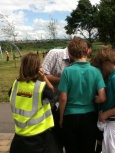
|
Children using digital literacy to engage with reading and writing This lesson idea uses technology to promote active learning(ta) as resources were produced to be located and explored in a public park. The early stage of the activity, involving the creation of the resources by the children, required discussion(ta) involving the whole class(ta). Group talk(ta) was also employed as a strategy, with the children agreeing on a narrative(ta) outline relating to the event. The creation of the online materials encouraged development of e-skills(topic).
The later stages of activity, where the children were looking for clues, required them to ask questions(ta) and to take a collaborative(tool) approach to find a solution, based on the digital texts they found. | |
| Questioning | Questions you can ask | |

|
||
| Questioning | Questioning Techniques in Primary Science | |

|
Asking questions about what students saw, measured, understood. About what could happen, happened, should have happened... and more. This resource offers the opportunity to think about the appropriate questions to ask at various stages of investigation and how to ensure high quality questioning(ta) at these points. This is obviously an important classroom skill, one which has a strong impact on children's progression, yet which can often be lacking in classrooms which tend to focus on fact-based recall questions. This resource offers an opportunity to think about such an activity and some prompts for applying questioning techniques. Although they are written for science, these suggestions could be used as prompts for application in other subjects.
| |
| Questioning | Questioning checklist | |

|
||
| Questioning | Questioning | |

|
Why Question? A unit exploring the use of questioning in your classroom This resource discusses questioning(ta) and its relationship to engaging reasoning(ta), active learning(ta) and discussion(ta) as well as aspects of planning(ta) such as writing learning objectives(ta).
| |
| Questioning | Strategies for increasing participation in answering questions | |

|
||
| Sampling | Sampling techniques to assess population size | |

|
| |
| Standard Index Form | An Introduction to the Standard Index Form | |
Working out the rules according to which a calculator displays large numbers The Standard Index Form is a key idea for mathematicians and scientists. The notion that we choose to write numbers in this way requires some explanation. So in this activity, pupils take part in an investigation(ta) on how standard index form works. This is a higher order(ta) problem solving context where students are encouraged to engage in mathematical thinking(ta). They may be involved in whole class(ta) or small group work(ta) discussion(ta), so they have a good opportunity to practice using mathematical language(ta) and questioning(ta).
This means that students do not need to be able to explain their ideas in full: they can use the calculator's feedback to discover whether their ideas are correct or not. This is also an exciting way for pupils to realise an initial idea that fits the data may need to be extended when new data arises. This resource therefore aims to develop investigative skills, as well as introduce pupils to standard index form in a memorable way. The pupils can later use their knowledge of indices in discussion(ta) and group talk(ta) as they explain what is happening. | ||
| Statistics | Cubic Equations and Their Roots | |

|
To interactiviley explore and understand complex mathematics with GeoGebra This lesson features a ‘real life’ example for students to explore using visualisation(ta) via GeoGebra. The focus on ‘real life’ increases student motivation.
The activity engages pupils in group talk(ta), mathematical thinking(ta) and vocabulary(ta). This open ended(ta) task encourages higher order(ta) thinking, and encourages whole class(ta) discussion(ta)/questioning(ta) and inquiry(ta) projects. | |
| Using images | Organising images for a narrative | |

|
Write an essay without words The lesson encourages students to think about how to portray their knowledge through narrative(ta) - which may engage some students who would usually be less interested. The lesson encourages students to think about how to capture valuable information and ensure that key elements are highlighted while not 'overloading' the viewer with data. The lesson can be tailored to any age group - for younger pupils the task could be to take before and after photos and label them. More advanced pupils might explore time-lapse photography. Pupils should be encouraged to think about how this relates to the scientific method(ta) The task is interactive and could be conducted as a group work(ta) activity or as an element of an inquiry-based learning project. It could also lend itself to whole class(ta) dialogue(ta) and the use of ICT(i) including 'clicker' response systems for assessment(ta) and questioning(ta).
| |
On this wiki, pages and resources are organised in various categories (for instance by grade and subject).
This category page is part of the internal workings of the wiki software. The page below provides a more readable overview of the pages in this category, and you may find it easier to look at:
The text below is the standard wiki listing for the pages in this category.
Pedagogical Strategies(i)
Pages in category "Teaching approaches: Questioning"
The following 82 pages are in this category, out of 82 total.
B
C
D
E
I
M
O
- OER4Schools/Concept mapping
- OER4Schools/Concept mapping/pv
- OER4Schools/eLA2013
- OER4Schools/eLA2013/pv
- OER4Schools/eLA2014
- OER4Schools/eLA2014/pv
- OER4Schools/Faculty Workshop May 2014
- OER4Schools/Faculty Workshop May 2014/pv
- OER4Schools/Introduction to whole class dialogue and effective questioning
- OER4Schools/Introduction to whole class dialogue and effective questioning ADE Sample
- OER4Schools/Introduction to whole class dialogue and effective questioning ADE Sample/pv
- OER4Schools/Introduction to whole class dialogue and effective questioning/pv
- OER4Schools/mlw2014
- OER4Schools/mlw2014/pv
- OER4Schools/More on questioning
- OER4Schools/More on questioning/pv
- OER4Schools/Open and closed questions
- OER4Schools/Questioning
- OER4Schools/Questioning checklist
- OER4Schools/Questioning/pv
- OER4Schools/Questions you can ask
- OER4Schools/Strategies for increasing participation in answering questions
- Organising images for a narrative
- Origami Planes

